Carrier-Grade Ethernet Testing Made Easy!!
3rd, Nov 2017
Welcome to a November 2017 issue of GL Communications' Newsletter providing information and insight into High-Performance Carrier-Grade Ethernet Testing Methodologies:
- RFC 2544 - Benchmarking methodology for network interconnect devices
- ITU-T Y.1564 - Ethernet service activation test methodology
- RFC 6349 - Framework for TCP Throughput testing methodology
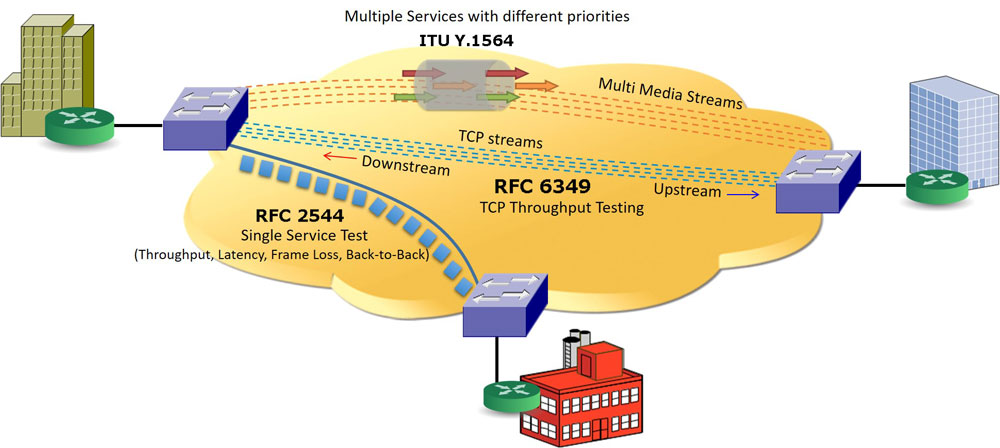
Overview
Service providers are shifting from only providing Ethernet pipes to enabling Ethernet services. Networks must support multiple services from multiple customers, and each service has its own performance requirements that must be met even under full load conditions and with all services being processed simultaneously.
IETF RFC 2544 standard, titled “Benchmarking Methodology for Network Interconnect Devices” has been designed to test network equipment in a lab environment. From a laboratory and benchmarking perspective, the RFC 2544 methodology is an ideal tool for automated measurement and reporting. RFC 2544 was designed as a performance tool with a focus on a single stream to measure maximum performance of a Device UnderTest (DUT) or Network Under Test (NUT).
With the introduction of Carrier Ethernet, service providers started offering Ethernet as a transport service, the need arose for multiservice testing. The new ITU-T Y.1564 (Ethernet SAM - Ethernet Service Activation Methodology) standard has been specifically created for multiservice testing to measure the maximum performance of the DUT or the NUT.
ITU-T Y.1564 standard is a set of procedures that test the ability of Ethernet-based services to carry a variety of traffic (voice, data, and video) at defined performance levels. In particular, it is aimed at improving upon legacy RFC 2544 test procedures, especially for Service Level Agreements (SLA).
Aligned with the requirements of today’s Ethernet services, the ITU-T Y.1564 test methodology enables complete validation of all SLA parameters in a single test to ensure optimized quality of service (QoS).
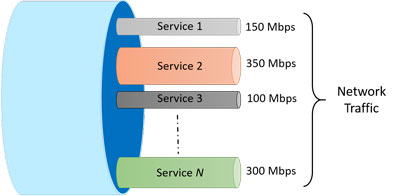
Both RFC 2544 and ITU-T Y.1564 standards are meant for testing at Layer2 or Layer3 (Ethernet or IP layers). However, many web based applications like Http, FTP, E-mail etc. run over TCP. Even many modern web applications like Facebook, YouTube and the like use TCP.
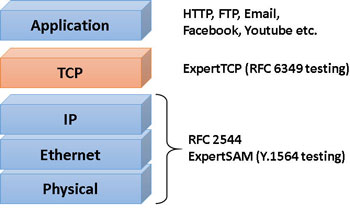
The TCP throughput may not match the throughput at the Ethernet/IP layer. This is because TCP throughput depends on factors like the end node TCP Window Size, buffer size of intermediate network nodes etc. Also, impairments like latency and packet drops causes TCP retransmissions, severely affecting the TCP throughput. So, there is a need for a new method to test at the TCP layer and hence RFC 6349 framework has been devised.
GL offers PacketExpert™ a comprehensive testing tool for 1 Gbps/10 Gbps wirespeed Ethernet/IP networks. The hardware includes both Optical and Electrical interfaces capable of RFC 2544, ExpertSAM™ (ITU-T Y.1564) and ExpertTCP™ (RFC 6349 based) functionalities.
Additionally, PacketExpert™ also includes other important applications such as BERT, Smart Loopback, Record and Playback, PacketBroker and Multi-Stream Traffic Generator and Analyzer.
RFC 2544 and Y.1564 Testing methodologies
RFC 2544 and ExpertSAM (ITU-T Y.1564) measure and report Key Performance Indicators like Throughput, Latency, Frame Loss, Burstability, Jitter etc. at Layer2 and Layer3.

These are some of the key differences between the two methods:
| RFC 2544 | ExperSAM (ITU Y.1564 based) | |
|---|---|---|
| Measurements | Provides Throughput, Latency, Frame Loss and Burstability measurements for the entire line as a whole | Provides Throughput, Latency, Frame Loss and Jitter measurements per stream |
| Testing Ethernet Line Vs Testing Ethernet Services | Treats the whole Ethernet Line as a single service without distinguishing the multiple services within the line, and measures Throughput, Latency etc. For the whole line | Allows to create and test more realistic multiple services with parallel flows from the bandwidth of 0 to maximum, and measures Throughput, Latency etc. Per service |
| Sequential Vs Simultaneous Testing | Tests and measures the Throughput, Frame Loss, Latency and Burstability parameters in sequential order, one after the other. | Allows testing and measurement of these critical parameters of all services simultaneously, greatly reducing the time to test |
| Testing Maximum Throughput Vs Testing the Bandwidth Profile | Simply measures the maximum Throughput of the service, without any consideration for committed and excess traffic. It is a simplistic test that only measures the maximum capacity of the line | Allows defining the Bandwidth Profile per service i.e. CIR (Committed Information Rate), EIR (Excess Information Rate) and the Traffic Policing rates, and for each service, generates traffic at these rates, and measures SLA parameters for both CIR and EIR rates |
Statistics and Results
ExpertSAM™ Test Selection and Service Configurations
ExpertTCP™ (RFC 6349 based) Test Methodology
ExpertTCP™ performs bidirectional TCP throughput measurements in combination with another unit at the remote location (other end of the network), that acts as the TCP server, as depicted in the below diagram.

Many real-world networks are not symmetrical. There may be significant differences between upstream and downstream directions. ExpertTCP™ supports both Upstream (Client → Server) and Downstream (Server → Client) direction testing. Bidirectional simultaneous testing/unidirectional testing can be done. Results are reported for both directions.
The server located at the remote location is completely controlled by the client side (located locally). User enters the entire configuration (both client and server configuration) locally, and results are displayed locally, avoiding the hassles of configuring the test at multiple locations.
Important Features
- Path MTU, Baseline RTT and TCP Throughput tests supported for both directions (upstream and downstream) independently
- Supports Upstream (Local to Remote), Downstream (Remote to Local) and Bidirectional tests
- Hardware FPGA based TCP implementation supports full duplex bidirectional wirespeed TCP (up to 1 Gbps in both directions simultaneously)
- Supports multiple TCP connections (up to 16 TCP connections)
- Test asymmetrical path with separate set of configurations for Upstream and Downstream
- Complete remote control - user needs to interact only with local side - all results/statistics (both local and remote side) provided on local side
- Detailed run time statistics with graphs for easy visualizations
- RFC 6349 specified metrics - TCP Efficiency, Buffer Delay Percentage, TCP Transfer Time ratio
- Command Line Interface for automated testing and remote accessibility
TCP Test Statistics and Results
Detailed runtime statistics are available and are depicted in the below screenshots.
Graphs provide easy visualizations to troubleshoot problems. Final results include the RFC6349 specified TCP metrics, as well as comparison of actual with the Ideal values.
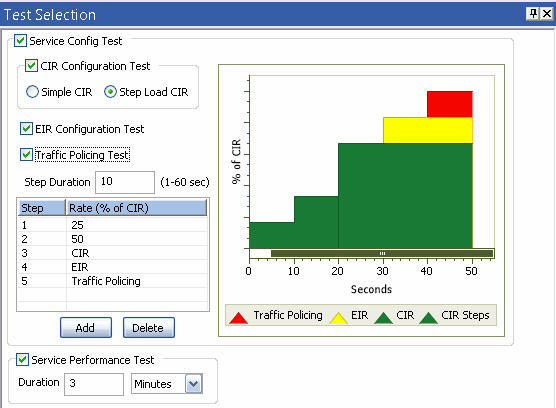
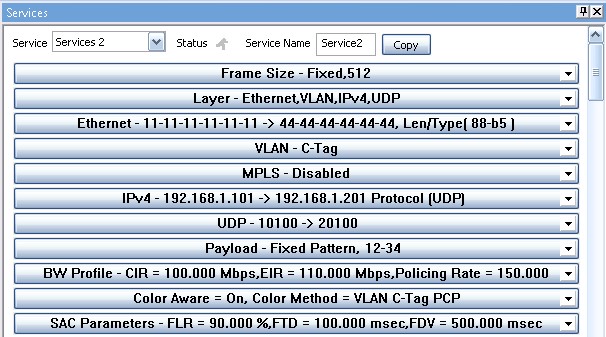
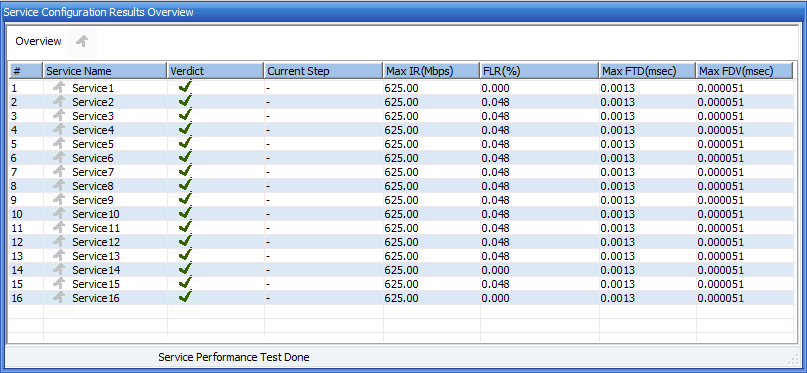


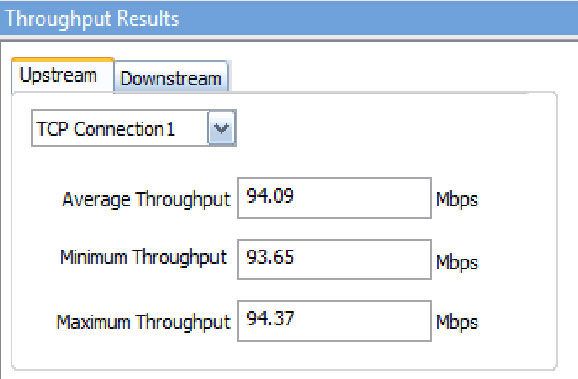
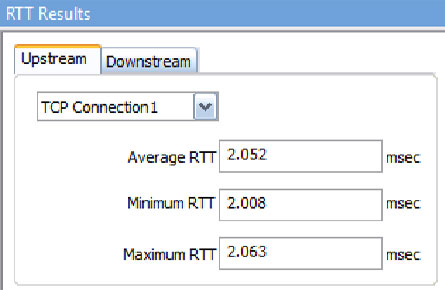
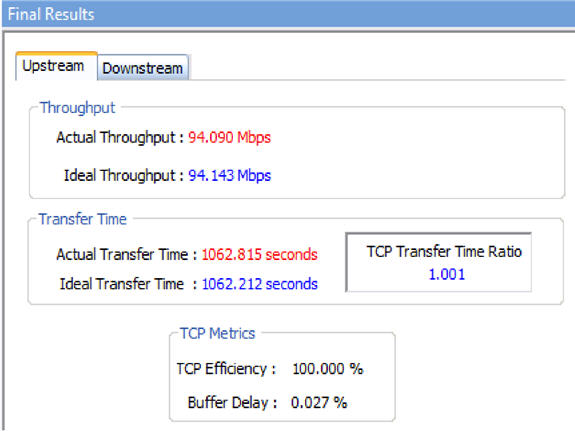
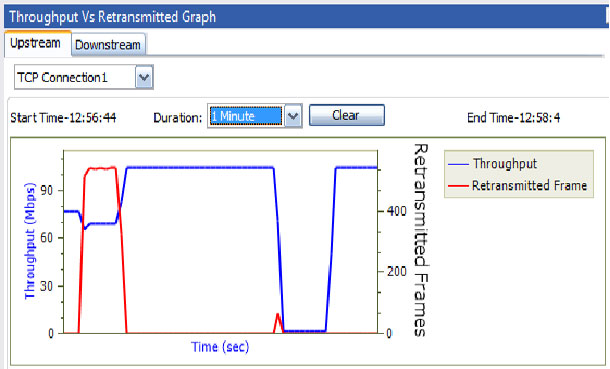
 Back to Newsletter Index Page
Back to Newsletter Index Page